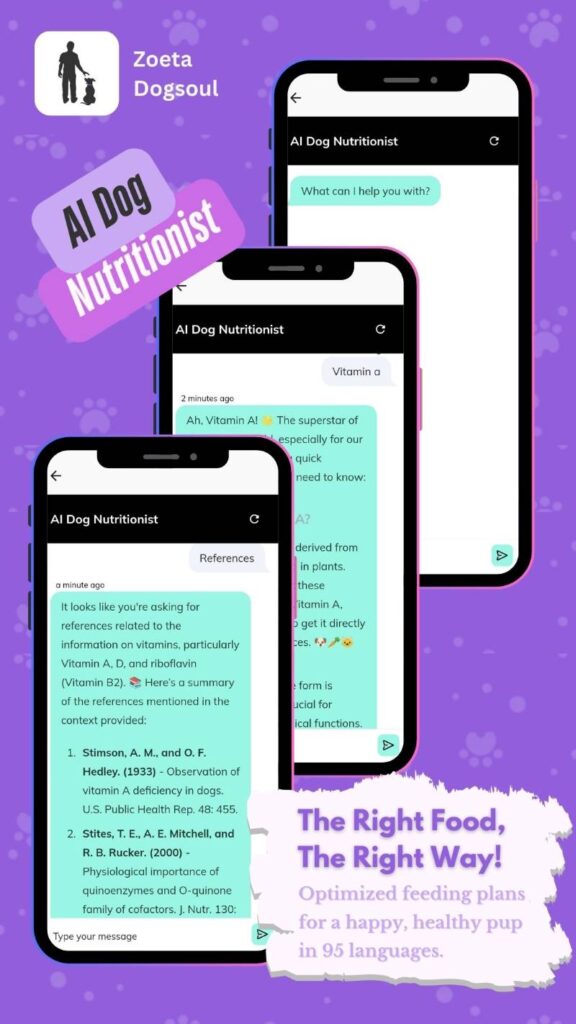Introduction: why puppy feeding schedules matter
The role of nutrition in early development
Proper nutrition plays a vital role in helping puppies grow into healthy, happy dogs. Puppies experience intense development—from their tiny paws to their growing bones and brains. Getting the right nutrients at each stage supports strong immunity, proper organ function, and energetic play. A well-planned feeding schedule delivers the energy and building blocks puppies need, exactly when their bodies need them most.
Why feeding frequency matters
How often you feed a puppy directly impacts their growth and health. For instance, puppies younger than four weeks old require feeding every 2-4 hours to maintain steady blood sugar levels and support their rapidly growing bodies. As puppies mature, their digestive systems evolve, allowing for longer gaps between meals. Feeding frequency also helps manage weight, reducing risks such as obesity or stunted growth. Smaller, more frequent meals help stabilize metabolism, especially in small breeds prone to hypoglycemia.
What you will learn about feeding schedules
This guide will help you become confident in meeting your puppy’s age-specific needs. You will discover:
- The different stages of puppy growth and how feeding routines should evolve.
- How breed size and metabolism affect nutritional requirements.
- Practical tips for adjusting schedules and monitoring your puppy’s health.
Understanding these fundamentals lets you build a healthy foundation—helping your pup thrive as they grow and explore the world around them.
Understanding puppy developmental stages
The Five Key Stages
Puppies experience dramatic changes from birth to their first birthday. Understanding these stages helps you meet their unique nutritional needs and supports healthy growth.
- Neonatal (0–2 weeks):
At this age, puppies depend entirely on their mother’s milk. Feeding occurs every 2–4 hours. Their bodies are developing fast, and they need the constant nutrition milk provides for survival and early growth. - Transitional (2–4 weeks):
Puppies start opening their eyes and reacting to the world. They still need frequent feedings, but soft foods may begin to supplement milk. Small, gentle introductions are best because their digestive system is still sensitive. - Socialization/Weaning (4–8 weeks):
This is a big step, as puppies learn to eat solid food and reduce their reliance on milk. Feeding often increases to four times daily. Easy-to-digest puppy foods mix well with milk or water to form gruel, ensuring steady energy and growth. - Juvenile (8 weeks–6 months):
Rapid growth means big appetites! Puppies usually eat three to four times each day. Balanced meals support developing muscles, bones, and coordination. Consistent schedules help prevent digestive troubles. - Adolescent (6–12 months):
Growth slows, and calorie needs become more stable. Meals are reduced to two or three times daily, with portions adjusted as puppies approach adult size.
Why Feeding Schedules Matter 😊
At each stage, nutritional needs and feeding frequency must adapt. Changing your puppy’s feeding schedule as they mature ensures they get the right energy and support for every leap in growth and learning. This thoughtful approach helps prevent feeding mistakes and keeps your pup happy and healthy.
Neonatal feeding (0-4 weeks)
Feeding frequency and methods
During the first four weeks of life, puppies are entirely dependent on milk—ideally from their mother. Puppies at this stage need to feed every 2-4 hours, both day and night. If the mother cannot feed them, a commercial canine milk replacer should be used. Cow’s milk is not suitable, as it lacks essential nutrients and may upset their digestion.
Consistent feeding intervals are vital to prevent drops in blood sugar, especially for smaller breeds. Each feeding session helps support rapid growth, brain development, and immune function. Skipping feedings can put puppies at risk for hypoglycemia and developmental issues.
Essential nutrients during early growth
Mother’s milk or a proper puppy formula delivers all the nutrients a newborn needs at this stage. The milk provides:
- Energy from fats for body temperature regulation
- Proteins for tissue growth
- Antibodies to fight off diseases
Puppies cannot digest solid food yet, so milk must be their sole nutrition source.
Monitoring signs of healthy development
To ensure neonatal puppies are thriving:
- Check for steady weight gain every day—puppies should gain about 5-10% of their birth weight daily.
- Watch for active nursing, frequent sleeping, and a warm, plump body.
- Be alert for signs of trouble: poor suckling, weight loss, weakness, or a cool body means veterinary support is needed.
A consistent feeding routine in these important first weeks gives puppies the best start for robust health and steady development.

Weaning period feeding (4-8 weeks)
Transitioning to Solid Foods
During weeks 4-8, puppies start to explore life beyond their mother’s milk. This period is all about helping them shift gently from a milk-only diet to eating soft, solid foods. Begin by offering a mixture of puppy food and water or puppy formula, creating a soupy gruel texture. Start with a ratio of about four parts liquid to one part solid food, and thicken the mix gradually as the weeks pass and puppies adapt to chewing and licking.
Puppies are naturally curious at this stage, so encourage them by letting them lick the gruel from shallow dishes. It’s best to keep the meals warm—not hot—to make the experience inviting and easy to digest. Let your puppy explore the taste and texture, but don’t force the process. Some will dive in quickly, while others need more time.
Feeding Schedule and Nutrition
Puppies need to eat frequently to support steady growth. Offer food four times per day so their energy stays consistent throughout the day. This schedule mimics their natural tendency to nurse often and helps avoid issues like low blood sugar.
While introducing solids, continue providing access to mother’s milk or a commercial puppy milk replacer until the end of the weaning period. This helps cover all nutritional bases. Monitor each puppy’s weight gain and stool consistency, both of which are important indicators of healthy development.
With patience and a little mess, your puppy will soon be ready to move on to more regular puppy food meals as they continue to grow.
Feeding puppies 8-12 weeks old
Adjusting Meal Frequency and Portion Sizes
At 8-12 weeks of age, puppies move into a key growth phase, with nutritional needs changing rapidly. Most puppies thrive with 3-4 meals per day during this period, though the exact number depends on breed size. Small breeds often need four meals daily to help manage their quick metabolism, while larger breeds may be comfortable with three to four meals.
Portion size matters just as much as frequency. Use the feeding guide on your puppy food packaging as a starting point, and divide the total daily amount by the number of meals. Monitor your puppy’s body condition closely—puppies should be energetic, with ribs easily felt but not seen. Adjust portions slightly if weight gain is too rapid or too slow.
Establishing Consistent Routines
Consistency is key for healthy eating habits. Offer meals at the same times each day—morning, midday, afternoon, and evening. Use a designated feeding spot, free from loud noises and distractions. This helps your puppy feel secure and less likely to gobble food or skip meals.
As your puppy grows, observe their behavior and weight changes. If you notice signs like excessive hunger or reluctance to eat, fine-tune the schedule as needed and consult your veterinarian for guidance.
Careful progression now lays the foundation for balanced growth and paves the way for feeding changes in the next stage.
Feeding schedules for 3-6 month old puppies
Transitioning to three meals per day
At this age, most puppies are ready for a more structured feeding schedule. During the 3-6 month window, feeding reduces to about three meals per day for most breeds. Toy and small breeds may still benefit from an extra meal, but by now the goal is to stabilize their nutritional intake and encourage healthy growth. Stick to consistent meal times and designated feeding spots to help your puppy develop good mealtime habits.
Meeting caloric needs during high-growth months
This juvenile phase is all about rapid muscle and skeletal development. Puppies need a caloric boost to support their bodies, so choose high-quality, formulated puppy food that matches their size and breed. Carefully measure each portion using the puppy food packaging as a guide. Large and giant breeds require slightly larger portions but must avoid excessive calories to protect their developing joints.
Monitoring your puppy’s body condition
Preventing both overfeeding and underfeeding is vital during these months. Regularly check your puppy’s body condition. You should be able to feel, but not see, their ribs. If your puppy starts to gain too much weight, reduce portions slightly. If they appear thin or less energetic, consider increasing their food a little at each meal. Keep an eye on their energy, coat, and overall appearance—these are good indicators of proper feeding.
With your puppy’s foundational feeding schedule in place, you’ll be well equipped to navigate the months ahead as their needs continue to change.
Feeding puppies 6-12 months old
Gradually Adjusting Meals as Puppies Mature
During the 6-12 month stage, puppies shift from rapid growth to a steadier development pace. This means you can start offering fewer meals per day—typically two to three, depending on breed size. Small breeds often do best with three smaller meals, while large breeds may adjust well to two balanced meals daily. Watch your puppy’s appetite and energy. Some will naturally signal readiness for fewer feedings as they mature.
Portion Control Matters
This period calls for careful attention to portion sizes. Since puppies’ growth is slowing, continuing high-calorie or oversized servings could lead to unhealthy weight gain. Feed your puppy high-quality food made for their age and size, following package guidelines and personalized advice from your veterinarian. Keep measuring cups handy to ensure every serving is accurate.
Transitioning to an Adult Routine
Start preparing your puppy for adult meal patterns around this age. Gradually shift meal times and portions over weeks, rather than making sudden changes. This helps prevent digestive upset and encourages healthy eating habits. If your pup starts leaving food behind or seems uninterested, it might be a sign to reduce portions or move to a twice-a-day routine.
By paying attention to your puppy’s body condition, appetite, and behavior, you’ll support a smooth and healthy transition through adolescence into adulthood.
Feeding. Frequency.
How often your puppy eats shapes how they grow.
Feeding too much or too little can lead to weight issues, stunted growth, or low energy. A proper schedule keeps your puppy balanced and thriving.
Different ages need different routines.
Younger puppies need frequent meals to support rapid development, while older pups benefit from fewer, structured feedings. Timing and consistency are key.



This guide breaks it down.
From newborns to young adults, you’ll learn exactly when and how to feed—based on age, breed size, and growth stage. Let’s fuel your puppy’s health the right way.
How breed size affects feeding frequency
Feeding small and toy breeds
Tiny puppies have big energy needs! Small and toy breeds have much faster metabolisms compared to their bigger friends. This means food is processed quickly, and their bodies can run out of fuel fast. To prevent low blood sugar (hypoglycemia), small and toy breeds need to eat small, frequent meals throughout the day. Skipping meals can make them weak or even sick. For many, three to four meals per day is a must during their first year.
Meeting needs of medium breeds
Medium-sized puppies fall right in the middle. Their metabolisms are not as fast as small breeds, so food can last a bit longer. Most medium puppies do well with three meals per day as they grow. This ensures enough energy and balanced nutrition for steady development. Portion sizes may increase as they get older, but spread-out meals keep them happy and healthy.
Portion control for large and giant breeds
Large and giant breed puppies grow quickly but have slower metabolisms. Their bodies need more total calories, but not all at once. Instead, it is best to offer two to three controlled meals a day. This careful approach helps prevent too-fast growth, keeps bones safe, and lowers the risk of joint problems. Overfeeding big puppies can lead to issues like hip dysplasia, so meal sizes must be managed closely.
Breed size is a key part of planning a healthy puppy feeding schedule. Next, let’s look deeper at why these schedules are so important.
Risks of improper feeding schedules
Why feeding schedules matter
A balanced feeding routine keeps your puppy healthy and supports normal growth. Skipping or mismanaging meal times, however, can have serious effects. Both overfeeding and underfeeding come with distinct risks, and paying attention to your puppy’s body condition is key to preventing long-term problems.
Overfeeding: more harm than you might think
Feeding your puppy too much can lead to:
- Obesity, which may decrease energy and create strain on young bones and joints
- Higher risk of joint issues such as hip dysplasia, especially in larger breeds
- Digestive problems, including diarrhea and discomfort
Obese puppies are more likely to develop chronic health conditions later in life. Keeping portions under control and sticking to an appropriate meal count helps prevent these problems.
Underfeeding: dangerous consequences
Not providing enough food can be just as harmful. Risks include:
- Developmental delays—slower growth and learning
- Hypoglycemia, particularly in toy and small breeds, causing shakiness or even seizures
- A weakened immune system, making your puppy more vulnerable to illness
The importance of monitoring
Regularly check your puppy’s body condition score (BCS). This means visually assessing your puppy’s shape and gently feeling their ribs and waistline. BCS helps ensure your feeding schedule supports healthy growth, not unwanted weight gain or weight loss.
With these risks in mind, you’ll want to consider individual needs and signs to make the right adjustments for your puppy’s routine.

Factors affecting individual feeding needs
Activity level differences
Not all puppies have the same energy levels! An active puppy who loves playtime or long walks will burn more calories and need a bit more food. On the other hand, a calm puppy who prefers gentle snuggles may need less. Activity level can change as your puppy grows, so it’s important to watch their enthusiasm and adjust food portions if you notice weight gain or loss.
The impact of neutering on metabolism
Neutering can affect how your puppy’s body uses energy. After a puppy is neutered, their metabolic rate may decrease slightly. This means they might need a bit fewer calories than before. Sticking with the same meal size could lead to unwanted weight gain. If your puppy is neutered, keep an extra eye on their body condition and ask your veterinarian if it’s time for a feeding adjustment.
Breed-specific considerations and health issues
Every breed comes with unique needs! Smaller breeds often require more frequent meals to avoid low blood sugar, while larger breeds need careful portion control to prevent joint issues and obesity. Some breeds or individual puppies might have special food sensitivities or underlying health concerns like digestive problems or allergies. Puppies recovering from illness or dealing with parasites may also require tailored nutrition plans.
Understanding these individual factors ensures your puppy’s meal schedule stays just right for their current needs, creating a solid foundation for healthy growth and development.
Puppy feeding frequency chart by age and breed size
Feeding frequency by puppy age and breed size
A clear feeding schedule helps your puppy thrive. The right frequency and portion size will support healthy growth and prevent common issues like obesity or hypoglycemia. The following chart breaks down recommended meal frequencies based on a puppy’s age and breed size, making it easy to plan a routine that fits your puppy’s needs.
| Age | Toy/Small Breeds | Medium Breeds | Large/Giant Breeds |
|---|---|---|---|
| 0–4 weeks | Every 2–4 hrs (milk) | Every 2–4 hrs (milk) | Every 2–4 hrs (milk) |
| 4–8 weeks | 4x/day | 4x/day | 4x/day |
| 8–12 weeks | 4x/day | 4x/day | 3–4x/day |
| 3–6 months | 3–4x/day | 3x/day | 3x/day |
| 6–12 months | 3x/day | 2–3x/day | 2x/day |
| Over 12 months | 2x/day | 2x/day | 1–2x/day |
*Toy breeds: Avoid skipping meals to prevent drops in blood sugar.
*Large breeds: Controlled portions help protect joints and bones.
*Every puppy is unique—adjust the schedule if your vet recommends.
Putting the chart into practice
Here are sample feeding times to help you get started:
- For a young puppy (8–12 weeks), feed meals at 7:00 AM, 12:00 PM, 4:00 PM, and 8:00 PM.
- As your puppy grows (3–6 months), move to 7:00 AM, 12:00 PM, and 6:00 PM.
- Larger breeds (6–12 months) often do well with breakfast at 8:00 AM and dinner at 6:00 PM.
Make feeding times consistent each day. If your puppy shows signs of being too full or too hungry, discuss with your veterinarian for personalized advice. Regularly reassess your puppy’s growth and body condition for the best results.
Signs your puppy’s feeding schedule needs adjustment
Physical indicators to watch for
It’s important to observe your puppy’s body closely to know if their feeding routine is working.
Start by checking their weight: are they gaining steadily, or is there sudden weight loss or gain? Steady weight gain is a good sign, while rapid gain can signal overfeeding, and loss can point to underfeeding.
Energy levels are another key clue. A well-fed puppy will be lively and playful. If your puppy seems lethargic or, on the flip side, hyperactive after meals, their schedule may need fine-tuning. Pay attention to their coat condition as well. A shiny, full coat means they’re getting the right balance of nutrients, while a dull or patchy coat can mean it’s time to reassess their food or frequency.
Behavioral signs of feeding issues
Behavior offers more guidance. If your puppy is excessively begging for food or seems restless before meals, they might not be getting enough. Some puppies become lethargic if underfed, missing out on crucial playtime. Others may be hyperactive, which can indicate a spike–and crash–in blood sugar, especially in small breeds. These behaviors are signs to take a closer look at feeding times, meal size, and nutrition.
When to seek veterinary advice
Quick changes in weight, a poor coat, lack of energy, or odd eating behaviors should never be ignored. If you notice ongoing issues despite schedule tweaks, consult your veterinarian as soon as possible. Your vet can assess your puppy’s body condition and suggest adjustments, ensuring your pup gets exactly what they need.
With attentive monitoring, you’ll better understand your puppy’s needs and help them grow healthy and strong.
Practical feeding tips for puppy parents
Establishing Reliable Feeding Locations and Times
Creating a routine is key for happy, healthy puppies. Feed your puppy in the same quiet spot every day—a familiar area helps them feel secure. Place their bowl away from noisy appliances or busy foot traffic. Puppies thrive with predictable routines, so aim to serve meals at consistent times. For example, try breakfast at 7:00 AM, lunch around 12:00 PM, and dinner at 5:00 PM. This consistency supports digestion and helps your puppy learn when to expect food, minimizing begging or anxiety.
Proper Food Storage and Preparation
Good nutrition starts with fresh food. Always store dry puppy kibble in an airtight container to keep it from spoiling or attracting pests. Wet puppy food should be refrigerated once opened and used within 72 hours. Wash food and water bowls daily with warm, soapy water to prevent bacteria. Serve puppy food at room temperature—cold food from the fridge can be unappealing and harder to digest. Measure portions with a kitchen scale or measuring cup to avoid overfeeding and help your pup maintain a healthy weight.
Safe Transitions Between Foods and Feeding Schedules
When changing food brands or transitioning to fewer meals, take it slow. Mix a small amount of the new food with the old, gradually increasing the new food ratio over one week. This reduces the risk of stomach upset. If you need to adjust mealtimes or frequency, shift times in 30-minute intervals a day to allow your puppy’s digestive system to adapt smoothly.
As you get comfortable with these feeding basics, you’ll be empowered to support your puppy’s unique needs as they grow.
Conclusion: creating your puppy’s optimal feeding plan
Building a Healthy Start
Giving your puppy the right start is all about feeding them at the right times with the right nutrients. Puppies need different feeding routines depending on their age and breed size. For example, newborns eat every 2-4 hours, while older puppies may need only 2-3 meals daily. Adjust feeding based on growth, activity, and body condition.
Age-based Feeding Recommendations
- 0-4 weeks: Mother’s milk or puppy formula every 2-4 hours
- 4-8 weeks: Gradual weaning, 4 meals per day
- 8-12 weeks: Soft puppy food, 3-4 meals per day
- 3-6 months: Three meals a day, adjusting portions as they grow
- 6-12 months: Transition to 2-3 meals, tailoring for breed needs
Always monitor your puppy’s weight and energy. If you notice sudden weight changes, changes in appetite, or energy dips, a feeding schedule adjustment may be needed.
Partnering with Your Veterinarian
Every puppy is different. Consult your veterinarian to tailor your feeding plan. They can help adjust portions, recommend foods, and address health concerns specific to your dog.
Keep Monitoring and Adjusting
Growth spurts, lifestyle changes, and breed differences all play a role in your puppy’s needs. Stay attentive and adjust as needed to keep your puppy healthy and happy.










